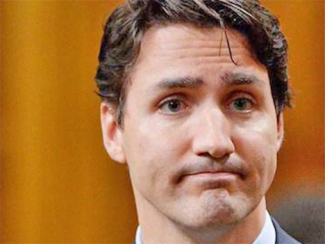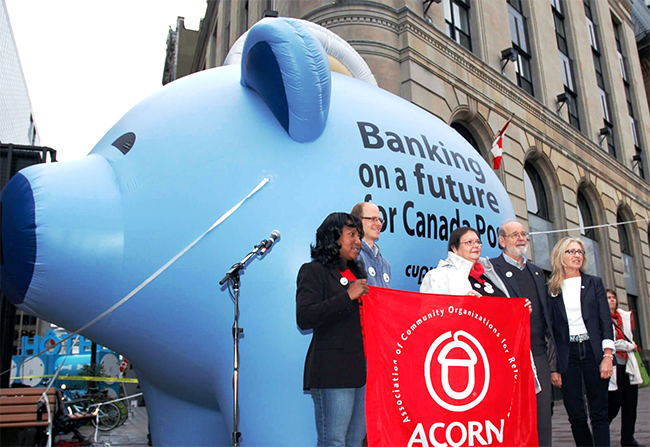BANKING ON US
Using our own money to beat off the privatization boondoggle

JUSTIN TRUDEAU WANTS TO KEEP IT DISCRETE. He wants to keep his love affair with big money deep in the shadows, so he can ever so discretely use his $120 billion infrastructure program to funnel millions of our dollars to private banks and big business. The Friends of Public Services (FPS) are working hard to stop him.
The more than 60 unions, community groups and environmental organizations in the FPS have a two-part action plan on how to do it:
- First, raise the alarm about what Trudeau plans
- Second, present a much better idea about how to build the infrastructure we need
The Liberals worked long and hard during the federal election in 2015 to dazzle us with promises of how much public good their infrastructure renewal program would deliver. What they didn’t talk about at all was how much private good their plan would deliver to their big business friends. Raising the alarm about that is key for the FPS.
Privatization lurking in the shadows
Privatization is the part of their plan the Liberals most want to keep discrete. But, all the big players know that P3 partnerships, (financial arrangements that allow private business to profit from public spending) are at ground zero in the Liberal plan.
A 2016 Financial Post story alerted investors to a “P3 financing windfall from Ottawa’s stimulus spending.” The story headline also predicted a, “bonanza in financing opportunities for public-private partnerships.”
Trudeau and Morneau met with banks and fund managers in November 2016 to pitch investment in infrastructure based on a P3 model.
The Liberals do their best to hide their infatuation with privatization. But the more you look the more you discover things like:
- Morneau’s Advisory Council on Economic Growth recommending “ancillary funding models” like user fees, to ensure that infrastructure pays off for investors
- Morneau using McKinsey & Co., the folks who helped Saudi Arabia privatize its oil company, as unpaid advisors to the council.
Morneau and company have also floated trial balloons about privatizing airports and have hired Credit Suisse to advise them.
The overwhelming truth about P3s is that they don’t work. They don’t save us money and they don’t deliver anything like what we need. P3s are almost always failed, flawed or abandoned. Public support is non-existant.

Banking at your friendly, neighbourhood post office
But the money for the infrastructure we need has to come from somewhere. The second part of the FPS action plan has the answer: use the post office.
Create a publicly-owned bank, operated by Canada Post in its 6,200 locations—almost twice as many as Tim Horton’s. Use it to fund infrastructure, improve service for Canadians, give communities control over infrastructure and provide an alternative to the big banks.
It’s all part of the Delivering Community Power campaign created by the Canadian Union of Postal Workers and the Canadian Postmasters and Assistants Association.
The effort, in partnership with Friends of Public Services and with the backing of more than 60 unions, community groups and environmental organizations, aims to establish a publicly-owned bank run out of post offices, something that exists in 29 other countries.
A bank owned by all of us would be able to put public interest ahead of a relentless drive for ever higher profits. Starting from there, postal banking becomes a solution to many other problems, such as:
- the always-rising fees of private corporate banks
- the lack of banking services in rural and remote areas.
- payday lenders who exploit people unable to access private banking services
- the lack of financing for small community-based businesses.
It’s a visionary proposal. The direct opposite of the Liberals’ privatization plans. Instead of funnelling money to private banks and investment funds, it would put our money to work for us right where we work and live.
- 30 -
• Delivering Community Power Campaign
http://www.deliveringcommunitypower.ca/











Add new comment